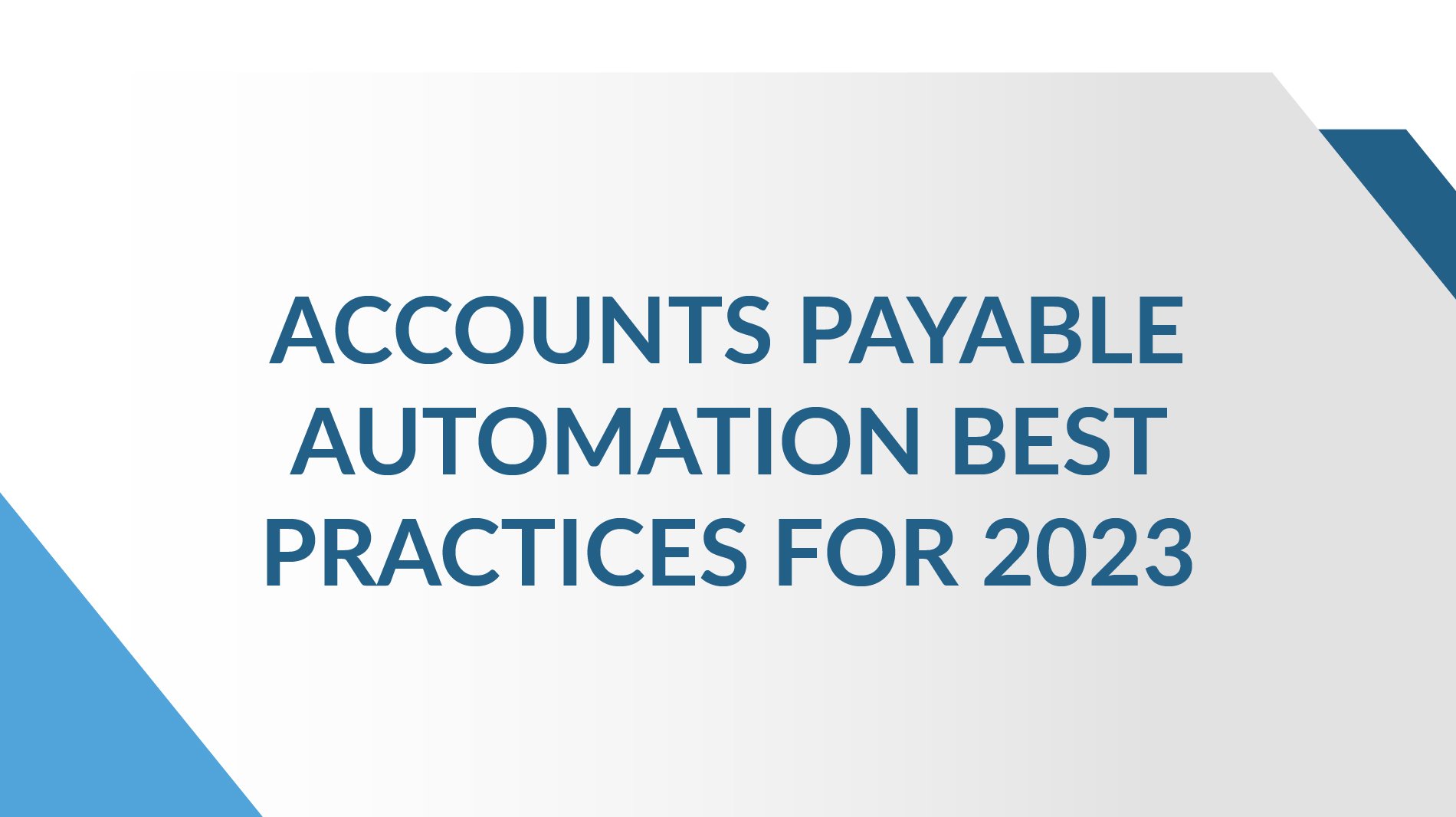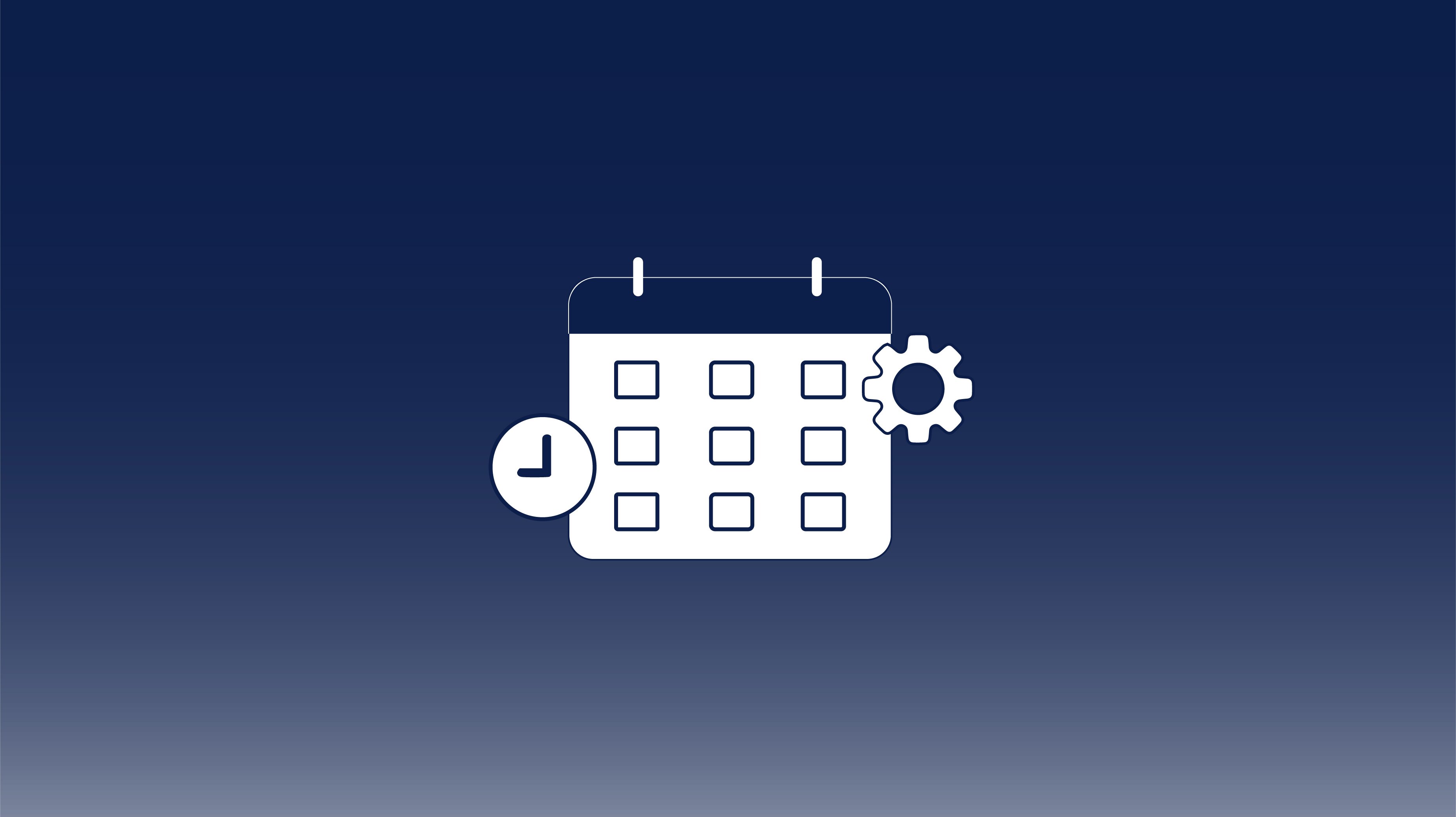Automated Accounts Receivable Programs: Cutting DSO by 30% in Six Months
In today’s economy, speed to cash is as important as speed to market. Companies that let receivables linger for 60, 75, or even 90 days are putting...

Understanding accounts payable best practices is key to choosing the right automation solution for your organization. Learn about AP automation in this guide.
Can’t seem to get your accounts payable (AP) processes above the curve?
If your accounting staff still spends much of the workday laboring over manual data entry, approvals, and payment processing, then maybe it’s time to learn more about accounts payable automation best practices.
CloudX has been helping organizations implement AP automation solutions to overcome their AP automation challenges for over a decade, and this guide is designed to help you build an AP automation business case you can take to your stakeholders with confidence. It’s also designed to show you the basics of navigating the digital landscape so your business can improve operations and soar into higher profit tiers.
Accounts payable (AP) automation is software technology that digitizes your accounts payable processes, eliminating most manual accounting tasks and streamlining your workflows to reduce human errors, save on costs, and free up time so accounting staff can perform other critical and high-level tasks.
Much AP automation software in service today is equipped with optical character recognition (OCR) combined with workflow automation to capture, process, and approve invoices, pay vendors, and generate timely reports. Therefore, when a business onboards software capable of integrating seamlessly with their accounting system, a full procure-to-pay (P2P) integration results. Altogether, a complete integration like this provides centralized access to documents and gives more visibility and control over every transaction.
Some interesting insights that give AP automation more meaning:
The core objective of most accounts payable teams in the 21st century is the same as it was years ago, and that’s to pay vendors quickly and efficiently—without the incidence of duplicate payments or late fees. Unfortunately, the increased volumes of work typically encountered by today’s AP employees can be overwhelming at best. Coupled with SOP adherence, more stringent audit protection requirements, and lower staffing levels, financial executives are continually looking for ways technology can eliminate paperwork handling and reduce accounts payable processing costs.
This is where AP automation comes in, and when you enlist the help of an automation software provider like CloudX, you’ll be able to:
Realize bigger cost savings. Cost per invoice is an important KPI for your business, and it’s an expense you can reduce significantly through automation. The cost of manual invoice processing can be over $13 per invoice, but an automation solution can reduce that cost to $2 or $3 per invoice.
Eliminate duplicate payments and overpayments. A high-quality automation software will create an end-to-end, trackable record of invoice capture, match, approval, posting, and payment so that any duplicate, unmatched, or mismatched payments get identified automatically.
Gain better fraud protection. Because payments match automatically to their respective invoices, unusual errors become much easier to catch. And besides this increased visibility, you’ll be able to set limits on invoice payments and control authorization and approval capabilities.
Experience fewer exceptions. Automation will help produce less variations over time, so common duplications and mismatches can be resolved through your automation software provider. In turn, you’ll have fewer payments routed your way for manual approval and you’ll get more time to focus on other tasks.
Enjoy better vendor relationships. When your invoice processing speeds up, so does your payment processing. This results in faster vendor payments and happier vendors. Because all documents are digitized, it’s also easier to communicate the status of invoices and payments with vendors.
As you search for an AP automation provider, it’s important to understand that invoice automation and payment automation are not the same thing; they are two separate functions that can work together as part of a larger P2P workflow. If a provider offers both, they will often state that they provide “end-to-end automation,” which means they can help you automate your AP processes from purchase requisitions, invoices, and approvals all the way to payment, reconciliation, and data archiving.
Invoice automation is a software technology that takes all those cumbersome invoices that arrive by paper, email, fax, or PDF and digitizes them. This processing alleviates the need for AP employees to manually enter invoice data into an accounting system, match purchase orders by hand, and physically route invoices to approvers. With the ability to collect, organize, and validate information, an invoice automation solution such as APSmart by CloudX can speed up the first course of payables processing so invoices get in the hands of the right approvers—faster.
Payment automation is a software technology designed to automatically process invoices and make paying vendors easier. It improves the speed, safety, and accuracy of payments and allows payments to be made by check, ACH, wire transfer, or virtual cards. The cost of processing payments through automation platforms like PAYSmart by CloudX is typically much less than making payments manually. Additionally, virtual card transactions can earn you cash back when you pay vendors in a timely manner, with many virtual card providers offering up to 1.5% cash back on every dollar spent with virtual cards
Follow this chart to discover all the elements of a good AP automation solution.
|
Workflow |
Best Practices |
|
Data Capture |
Automation software scans invoices upon receipt and digitizes them. Built-in Optical Character Recognition (OCR) technology converts text to machine-encoded text and extracts data. Workflow automation classifies, validates, and analyzes all data and completes reporting functions. |
|
Invoice Management |
Digitized invoices are automatically matched to purchase orders, routed to designated staff for review and approval, and sent for payment. They are then stored and archived digitally in an easy-to-locate file format. |
|
Department Structure |
Good department structure involves a centralized operating model coupled with AP automation technology that standardizes and automates all process steps. Multi-location businesses or remote teams that can’t physically operate in a central location can still use AP automation technology to standardize and automate process steps plus optimize visibility across all locations. |
|
Document Storage |
All digitized documents are scanned, organized, and stored online, aka “in the cloud.” They can be retrieved easily and at any time for review in the case of vendor inquiries, internal reviews, or audits. This online environment reduces physical storage needs, improves visibility, and provides better security to reduce the incidence of fraud. |
|
Approvals |
Validated invoices get checked against designated workflows and routed to correct approvers. automatically. Requests for approval can be made from anywhere and status of approvals can be checked at any time. All approvals are stored digitally in a searchable format. |
|
Auditability |
All transactions are time-stamped across every step of the AP process and stored digitally in searchable format. The automation software can check for duplicate payments, accounting errors, and fraudulent activity, ensuring compliance with SOPs. Auditors have easy access to all invoice history and transactions. |
|
Risk Management |
AP automation technology can identify unusual activity related to invoices and payments, allowing greater visibility and faster attention to discrepancies, and reducing the potential for fraud. Document accesses and controls can be pre-set for all system users. |
|
Accounting System Integration |
Direct integration between an AP automation software and an accounting system ensures complete control over the invoicing process, from procurement to payment. All data is stored securely online and is centralized and easily accessible from all business locations. |
Choosing to automate your accounts payable processes can have a big impact on your bottom line as far as time and cost savings. But if searching for an AP automation software provider has you feeling a little intimidated, don’t be. Try using these three simple steps to get started:
To get past the ideation stage, it’s important to first identify the reasons your business isn’t moving forward with an automation solution. Uncertainty about cost, worries about compatibility, and a general lack of understanding about how automation software works are three of the more common roadblocks associated with automation onboarding. Hold a brainstorming session and write down your business’s perceived hold-ups and concerns before surveying potential software partners. Most software representatives will be able to answer your questions readily, so you’ll be able to cross some contenders off your list once you discover the capabilities and compatibility of various products.
Before you employ a new software solution, take some time to outline the goals and benchmarks your business has in terms of what you want the software to help you achieve. For example, an end result can include a reduction in late payments across a measured number of quarters. Or an end result can be a percentage drop in accounting errors across a fiscal year. A benchmark can be the percentage of fraud your business experienced during a fiscal year in comparison to other businesses in your same industry. A benchmark can also be your cost per invoice average versus the cost per invoice average for other businesses in your same industry.
What are your AP department’s biggest pain points? Take some time to think about what processes need the most attention and be ready to discuss the metrics with potential automation software providers. Does processing manual invoices take up a lot of your staff’s working hours? Are there an unusually high number of late payments occurring? Are your approvals getting stuck in the delivery process? Once you understand your department’s most pressing needs, you’ll have an easier time choosing which software solutions are powerful enough to handle your most urgent needs.
From higher cost savings and bigger profits to better relationships with vendors, the benefits of AP automation are substantial enough that jumping on board with an AP automation provider like CloudX this year might be the best decision you make. It’s only a matter of time before automation technology becomes a driving force in a business’s success. Which end of the curve do you want your business on?
Contact CloudX to learn more about AP automation and to request a demo.

In today’s economy, speed to cash is as important as speed to market. Companies that let receivables linger for 60, 75, or even 90 days are putting...

Managing operational costs today often means balancing operational costs against tight margins, making it essential to join a group purchasing...